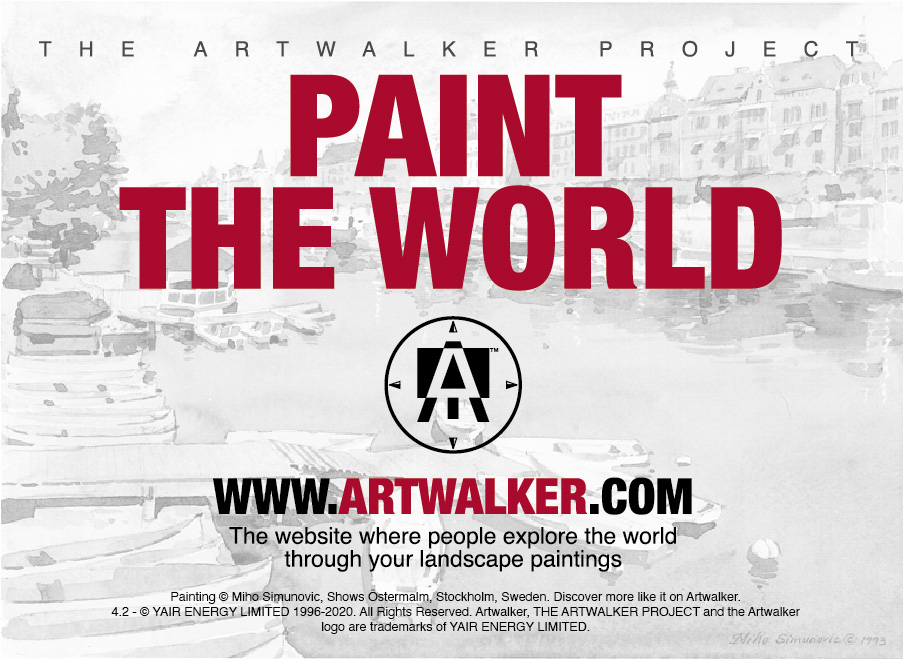ALEX BLOK PRODUCT HISTORY + BIO
(PRE-YAIR)
HEYYU
THE ARTWALKER PROJECT
SONOVISTA
COTRAV
JENESIS
PCW Stop Press
AMIGAMAGIC
COMMODORE 64 Stop Press
CPC AMX Pagemaker
Extra! Extra!
AMX Pagemaker for the BBC Micro
SPLASH! for the Datapen Turboball
D.O.R.I.S.
ARTSYSTEMATIC
BIO
Portfolio (External)
Press Coverage
2008
 Triggered by the demands of restaurant owners impressed with a sophisticated online menu publishing system he had produced, Alex fast tracked the introduction of the HEYYU Digital Signage solution. This involved sourcing display hardware from Taiwan, hiring graphic designers and electricians, and then installing the HEYYU units themselves. He managed, despite tight deadlines, family health issues, complex logistics and impatient high street business owners.
Triggered by the demands of restaurant owners impressed with a sophisticated online menu publishing system he had produced, Alex fast tracked the introduction of the HEYYU Digital Signage solution. This involved sourcing display hardware from Taiwan, hiring graphic designers and electricians, and then installing the HEYYU units themselves. He managed, despite tight deadlines, family health issues, complex logistics and impatient high street business owners.Fast forward to 2025, following feedback from customers, Alex has designed a next generation all-in-one HEYYU based on a high brightness daylight readable panel. Further, HEYYU [SUNSHINE] as it will be named, is to be powered by intuitive cloud based CMS software designed by Alex.
1996
MAGIC SAUCE: Navicon driven immersive Artwalks
1993
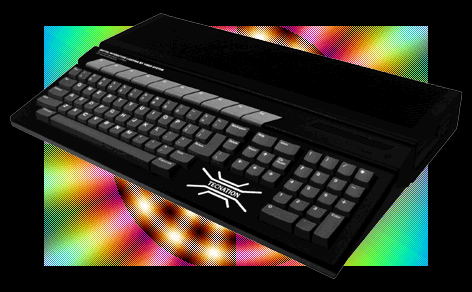 Compact BiT BOPPER powered audio reactive graphics system includes some of the most popular features of the renowned Classic BiT BOPPER, providing an affordable solution to your entertainment needs. SONOVISTA was distributed by High End Systems (Austin, Texas, USA) between 1993 and 1995. The Atari Falcon 030 based BiT BOPPER software that powers SONOVISTA was made available until around 2010 to enthusiasts of retro visuals.
Compact BiT BOPPER powered audio reactive graphics system includes some of the most popular features of the renowned Classic BiT BOPPER, providing an affordable solution to your entertainment needs. SONOVISTA was distributed by High End Systems (Austin, Texas, USA) between 1993 and 1995. The Atari Falcon 030 based BiT BOPPER software that powers SONOVISTA was made available until around 2010 to enthusiasts of retro visuals.
MAGIC SAUCE: Sync accurate BiT BOPPER audio reactive algorithms
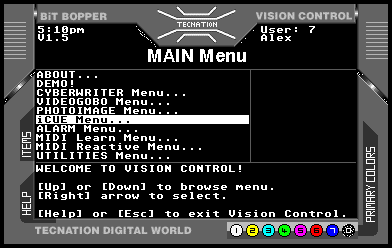
A NIGHT IN THE LIGHT OF SONOVISTA
 SONOVISTA may be programmed to power up with any iCUE or iCUE Sequence. You could start with a custom designed VideoGobo animation based on your logo.
SONOVISTA may be programmed to power up with any iCUE or iCUE Sequence. You could start with a custom designed VideoGobo animation based on your logo.
 Pre-programmed VideoGobo based iCUEs provide a dynamic video light show, fully synchronized with the ambient music.
Use the iCUE Alarm to automatically insert promotional messages and images at preset times.
Pre-programmed VideoGobo based iCUEs provide a dynamic video light show, fully synchronized with the ambient music.
Use the iCUE Alarm to automatically insert promotional messages and images at preset times.
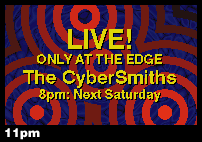 Promote next weeks live band using the CyberWriter's PAGE style text which automatically formats your messages for a professional appearance.
Promote next weeks live band using the CyberWriter's PAGE style text which automatically formats your messages for a professional appearance.
 Advertise beverages using the CyberWriter's smooth scrolling TICKER-TAPE style text that can be programmed to wrap around for as long as required.
Advertise beverages using the CyberWriter's smooth scrolling TICKER-TAPE style text that can be programmed to wrap around for as long as required.
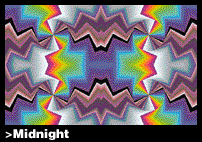 As the evening winds down, choose more placid imagery such as slowly gliding kaleidoscoped VideoGobo patterns...
As the evening winds down, choose more placid imagery such as slowly gliding kaleidoscoped VideoGobo patterns...
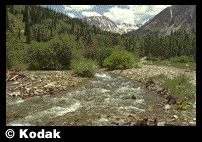 ...or scenic PhotoImages
...or scenic PhotoImages
SPECIFICATION
HARDWARE Atari Falcon 030 or C-LAB Falcon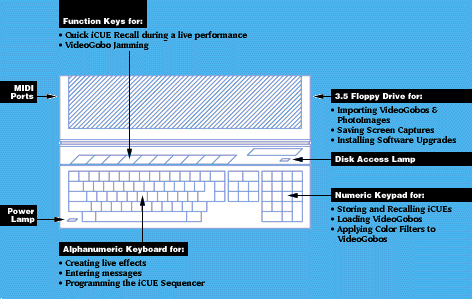 AUDIO REACTIVE GRAPHICS + VIDEO
Proprietory BiT BOPPER
FILE COMPATIBILITY
DOS Format 1.4MByte
Macintosh II/Macintosh PowerPC saved on MS-DOS formatted disk
VIDEO OUTPUT (NTSC or PAL)
1 volt Peak to Peak Composite to RCA / Phono
UHF (Channel 3 for USA)
COMPATIBLE VIDEO DEVICES
Video monitors, Video projectors, Televisions, Vision mixers, Video Effects Generators, Video Cassette Recorders, Multimedia Computers.
AUDIO INPUT
600mv Line Level (using optional attenuator)
Microphone
COMPATIBLE AUDIO DEVICES
Audio Mixing desk, HiFi system, Compact disc player, Audio amplifier or pre-amplifier, Multimedia computer, Video cassette recorder/player, Microphone etc.
PROJECT MANAGEMENT
Alex Blok
FEATURES + UX Design
Alex Blok
SOFTWARE DEVELOPMENT
Tim Wilson (Lead engineer of final product)
Johnny NG & Nick Baker* (Initial)
*Nick went on to lead the development of the original X-Box.
PHOTO: (C) Mike Scully Photography. All Rights Reserved. Kudos to Craze Communications for all the hard work!
AUDIO REACTIVE GRAPHICS + VIDEO
Proprietory BiT BOPPER
FILE COMPATIBILITY
DOS Format 1.4MByte
Macintosh II/Macintosh PowerPC saved on MS-DOS formatted disk
VIDEO OUTPUT (NTSC or PAL)
1 volt Peak to Peak Composite to RCA / Phono
UHF (Channel 3 for USA)
COMPATIBLE VIDEO DEVICES
Video monitors, Video projectors, Televisions, Vision mixers, Video Effects Generators, Video Cassette Recorders, Multimedia Computers.
AUDIO INPUT
600mv Line Level (using optional attenuator)
Microphone
COMPATIBLE AUDIO DEVICES
Audio Mixing desk, HiFi system, Compact disc player, Audio amplifier or pre-amplifier, Multimedia computer, Video cassette recorder/player, Microphone etc.
PROJECT MANAGEMENT
Alex Blok
FEATURES + UX Design
Alex Blok
SOFTWARE DEVELOPMENT
Tim Wilson (Lead engineer of final product)
Johnny NG & Nick Baker* (Initial)
*Nick went on to lead the development of the original X-Box.
PHOTO: (C) Mike Scully Photography. All Rights Reserved. Kudos to Craze Communications for all the hard work!
1991
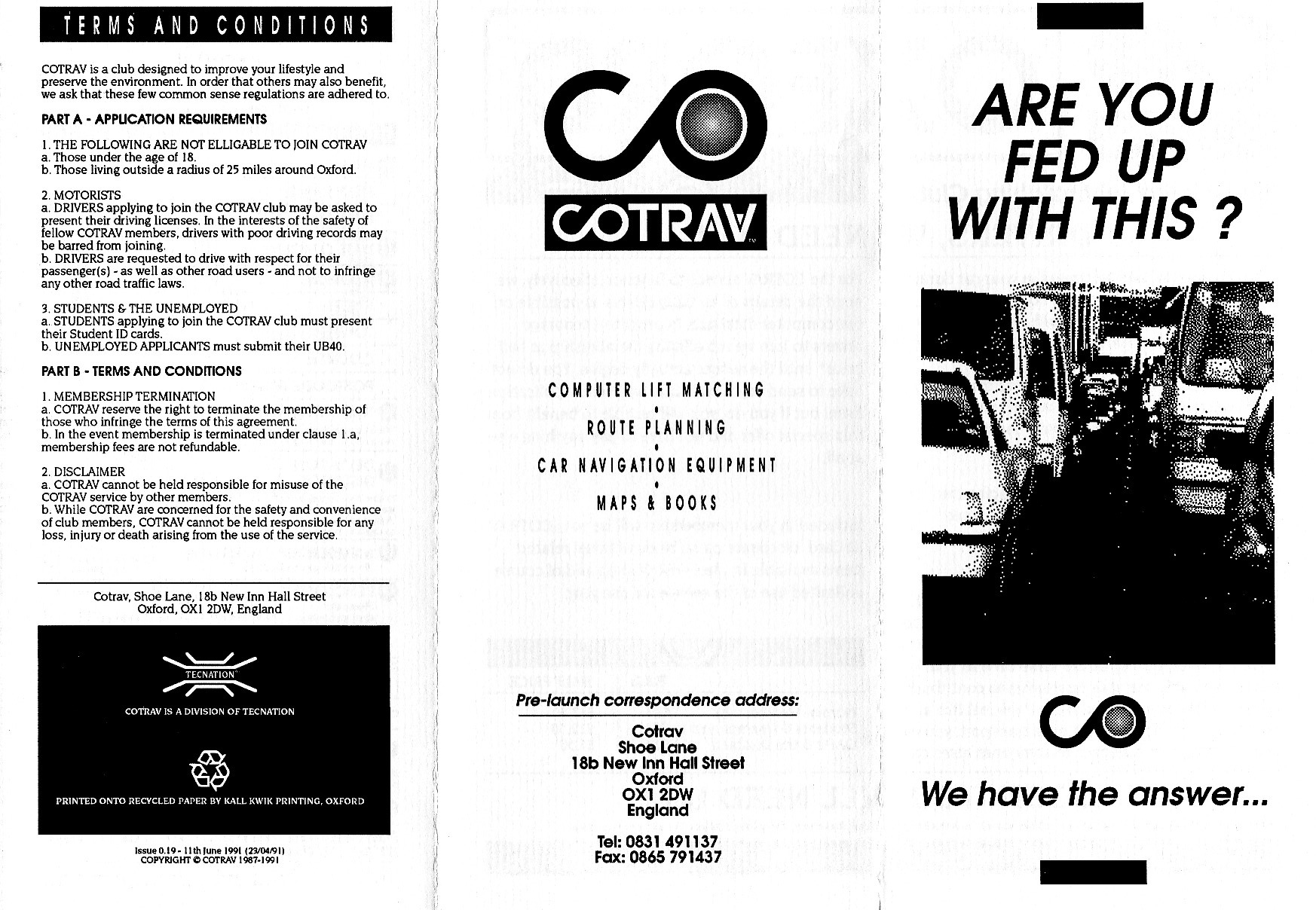

1987
Originally prototyped on the Commodore Amiga as part of AmigaMagic(tm) and further developed on the Acorn Archimedes with the backing of Acorn themselves, Jenesis was never completed after NeXT ceased to be and were subsequently purchased by Apple, Inc. NeXT were very enthusiastic about Jenesis and it was sad to see them go. To date (2023), no 'pro-sumer' 3D modelling and animation application has been developed with such an intuitive and natural interface as Jenesis could offer.
UPDATE: October 2021 - Jenesis concepts will hopefully be used in the PiCosm powered 3D Virtual Earth.
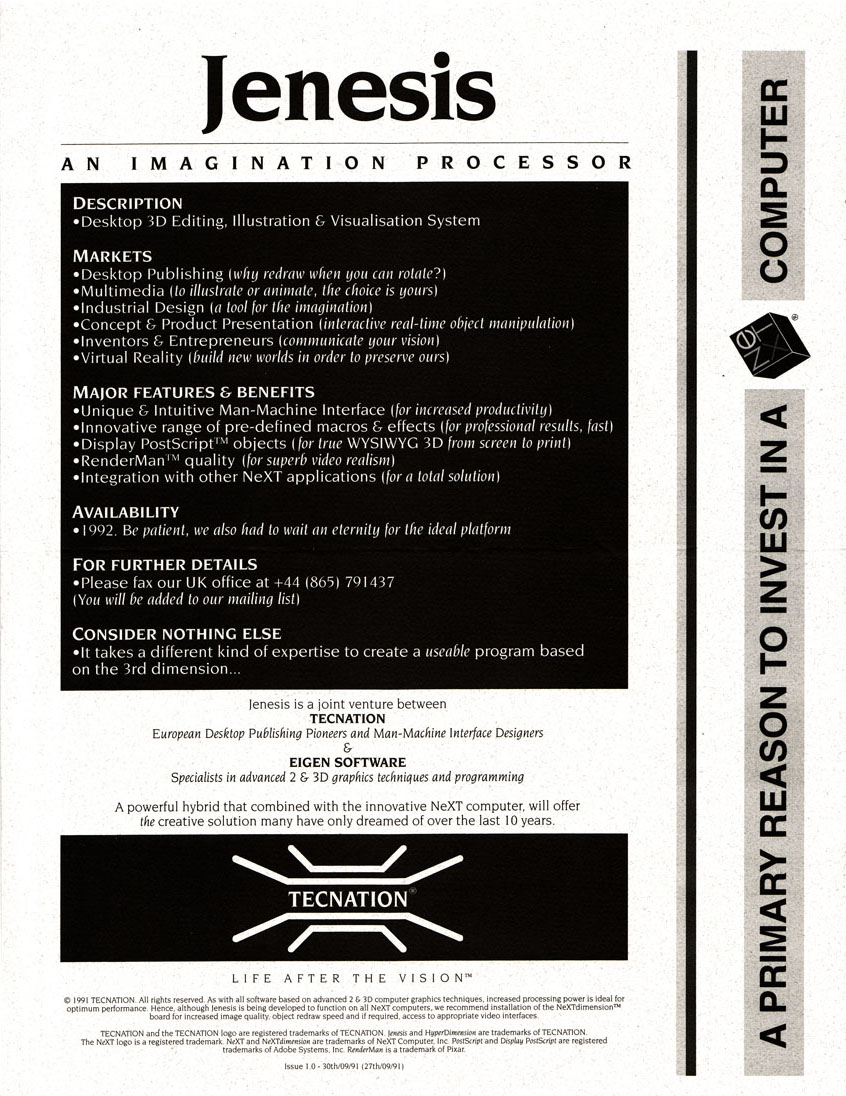 MAGIC SAUCE: Intuitive almost tactile UX could make creating 3D models as natural as using real workshop tools
MAGIC SAUCE: Intuitive almost tactile UX could make creating 3D models as natural as using real workshop tools
1987

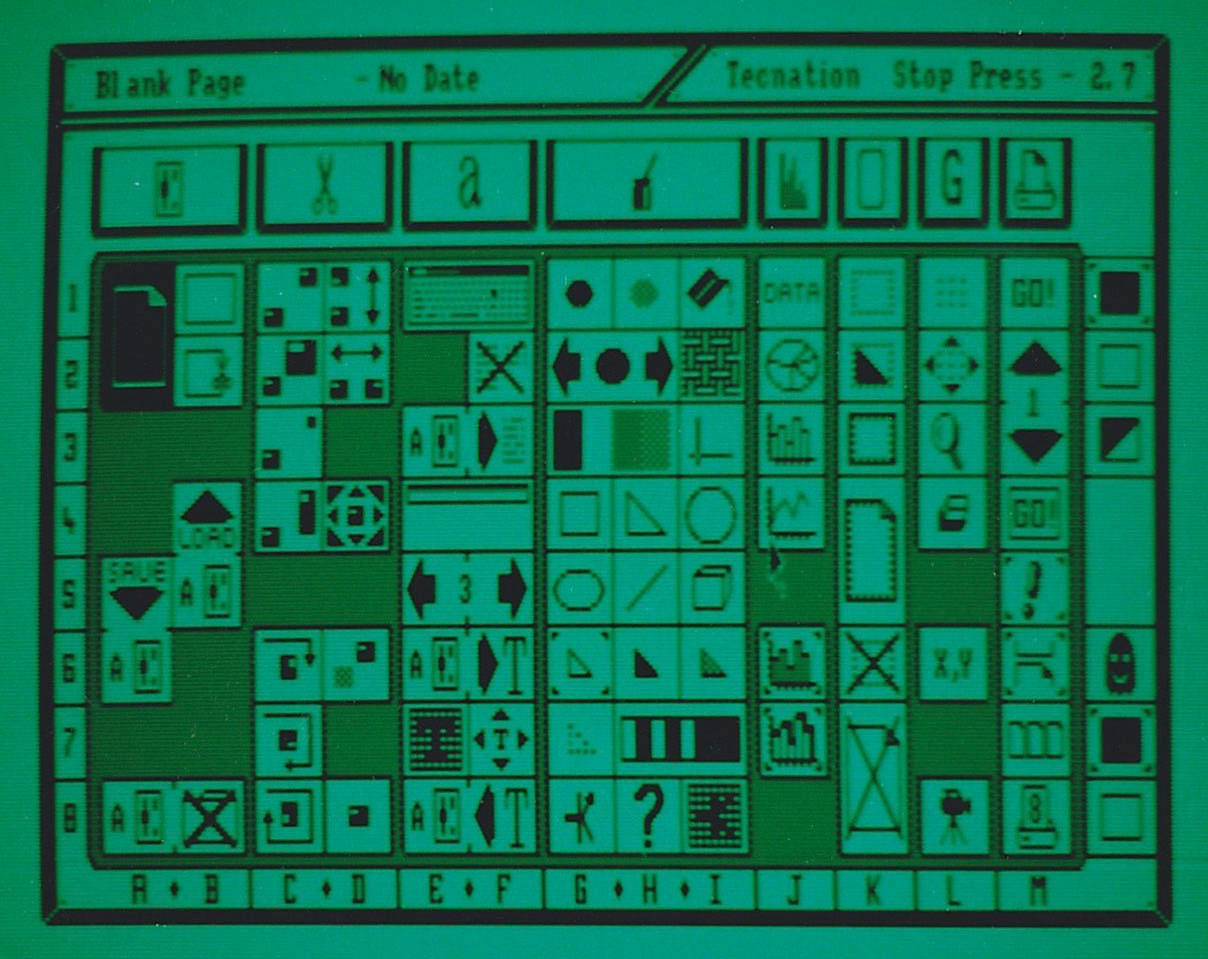
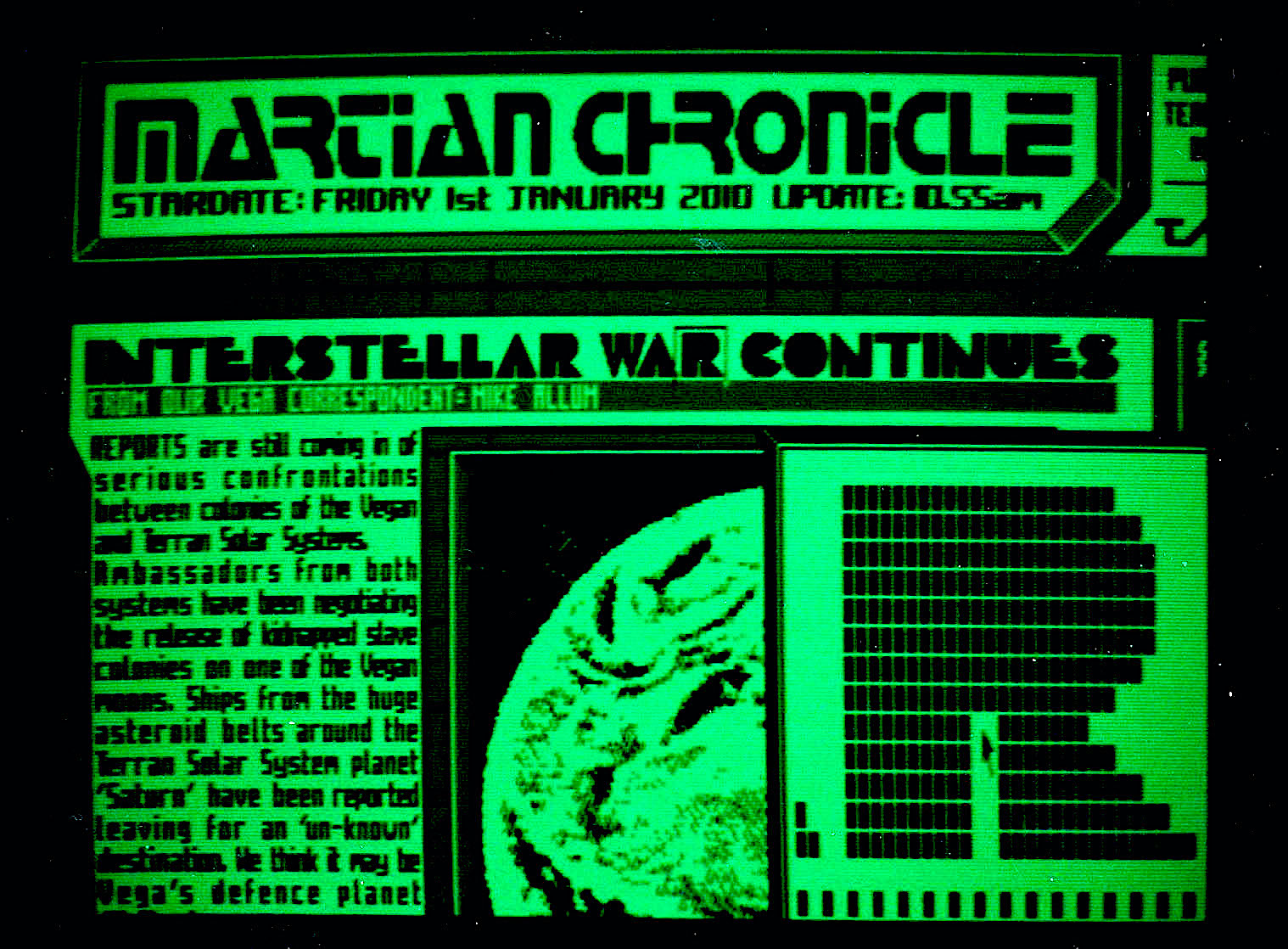
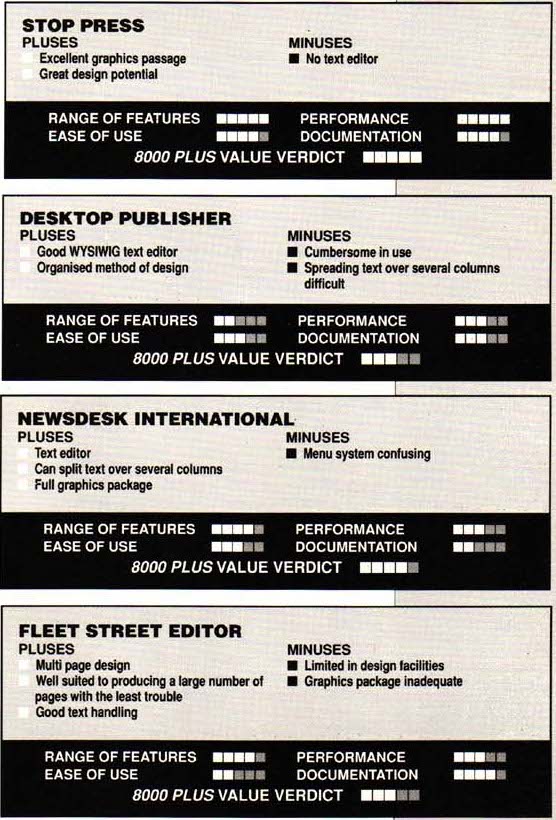
PRAISE
"... a superb package, well thought out and fun to use" Computer Shopper magazine, December 1988
"The one thing that Stop Press, Tecnation's new desktop publishing package, can show the software industry is that even when a market looks over-crowded you can still find a niche by taking a new and imaginative approach." 8000 Plus magazine, February 1988
"All things considered this is an excellent package. The program is fast and powerful, easy to use and flexible." Computing with the Amstrad PCW magazine, February 1988
"At a fraction of the cost of big DTP packages, Ross Blackman considers is fantastic value for money." Personal Computer World magazine, March 1988
"I have used all the DTP packages for the PCW ... but have always been left feeling that they were not so good as I might have wished, nor so comprehensive. Stop Press fulfils all my wishes and more. Your Amstrad PCW magazine, April 1988
"I can strongly recommend Stop Press" Personal Computer World magazine
"the best graphics available in a DTP package" 8000 Plus magazine
"I have been totally satisfied with its versatility and performance" G. Saunders, Stafford (user)
"May I add a genuine unsolicited commendation on Stop Press, an excellent package with a splendid selection of utilities" B. Orr, Leigh-on-Sea (user)
SPECIFICATION
DESCRIPTION Designer Desktop Publishing application for the Amstrad PCW OTHER PLATFORM(S) BBC Micro Amstrad CPC 128 Commodore 64 CONCEPTION 1986 LAUNCH DATE 1987 CONCEPT & DESIGN Alex Blok (Graphical elements created using our AMX PageMaker software) SOFTWARE DEVELOPMENT Neil Lee PROJECT MANAGEMENT Alex Blok MARKETING AND DISTRIBUTION Advanced Memory Systems Ltd (Subsequently acquired by Logitech.) SEE ALSO BBC Micro AMX Pagemaker Commodore 64 Stop Press Amstrad CPC Pagemaker1986
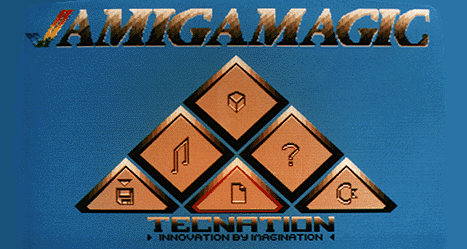
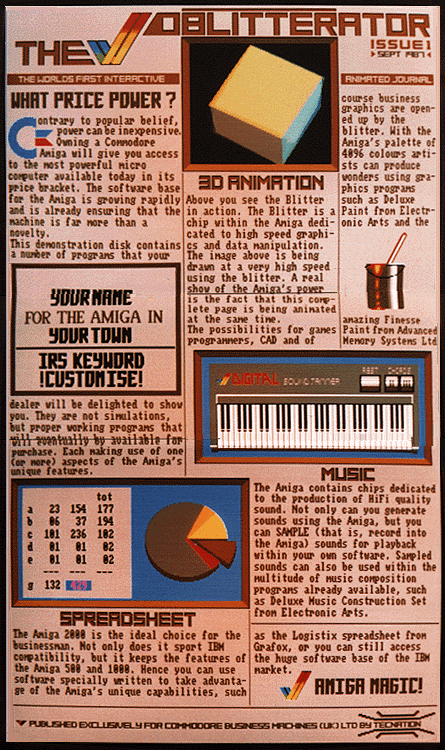
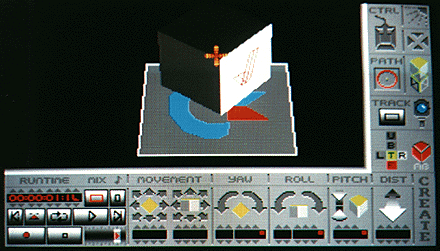

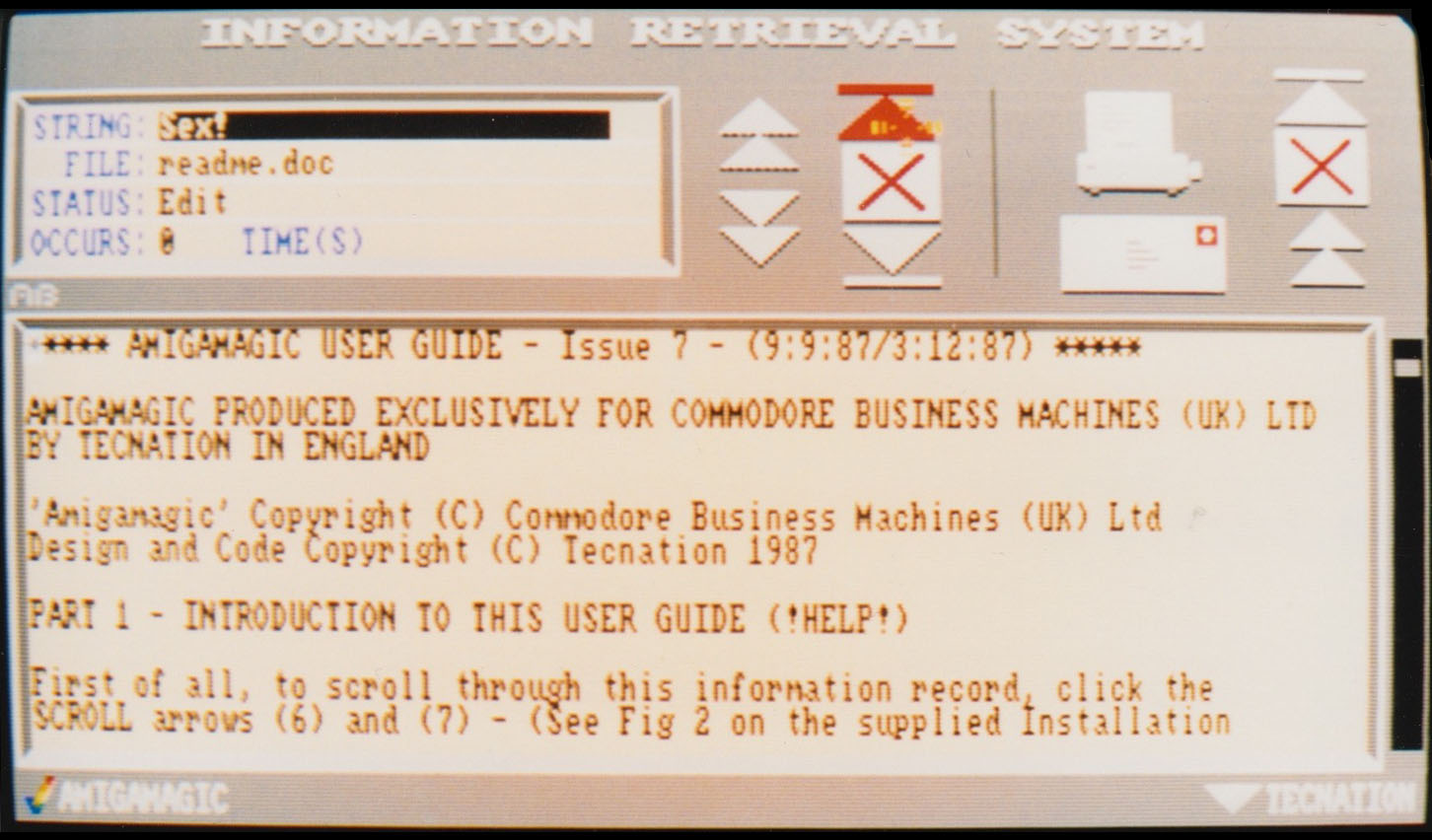
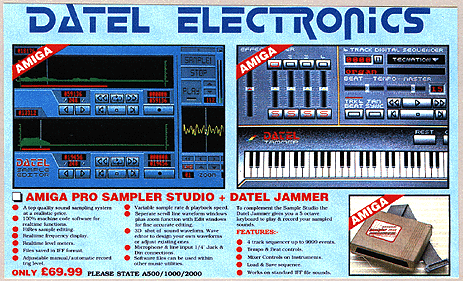
PRAISE
"The display is very pretty to look at, making good use of the Amiga's graphics capabilities" - Your Amiga, June 1988
"The screen displays of the Datel software are beautifully designed" - Amiga Computing, February 1989
SPECIFICATION
DESCRIPTION Interactive retail demo for the Commodore Amiga CONCEIVED 1987 LAUNCH DATE 1987, England (PRODUCT NOT FOR RESALE) CLIENT Commodore Business Machines (UK) Ltd UX DESIGN + PROJECT MANAGEMENT Alex Blok SOFTWARE DEVELOPMENT Professor Stephen Belcher 3D Software (Now director of the UK Met Office) Neil Lee Chris Driver BarryCOMMENT
AMIGAMAGIC once again proved our ability to conceive ideas and designs that were ahead of their time and set trends that were subsequently followed by others world-wide. The concepts behind the "bas-relief" 3D interface and oBLITTERator interactive newspaper were introduced to the mass market nearly ten years after AMIGAMAGIC.1986
 Electronic Arts acquired Stop Press for the Commodore 64.
Software developed by Dwarf Data under license. UX design by Alex Blok.
SEE ALSO
BBC Micro AMX Pagemaker
Amstrad PCW Stop Press
Amstrad CPC Pagemaker
Electronic Arts acquired Stop Press for the Commodore 64.
Software developed by Dwarf Data under license. UX design by Alex Blok.
SEE ALSO
BBC Micro AMX Pagemaker
Amstrad PCW Stop Press
Amstrad CPC Pagemaker
1986
 Developed by Gary Allen at Cygnet with design direction by Alex Blok
SEE ALSO
BBC Micro AMX Pagemaker
Commodore 64 Stop Press
Amstrad PCW Stop Press
Developed by Gary Allen at Cygnet with design direction by Alex Blok
SEE ALSO
BBC Micro AMX Pagemaker
Commodore 64 Stop Press
Amstrad PCW Stop Press
1986
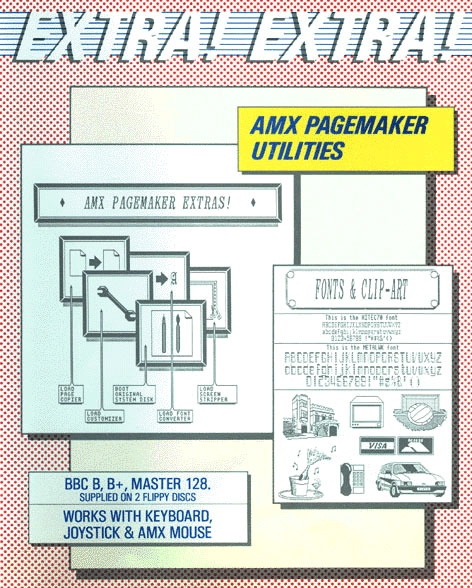
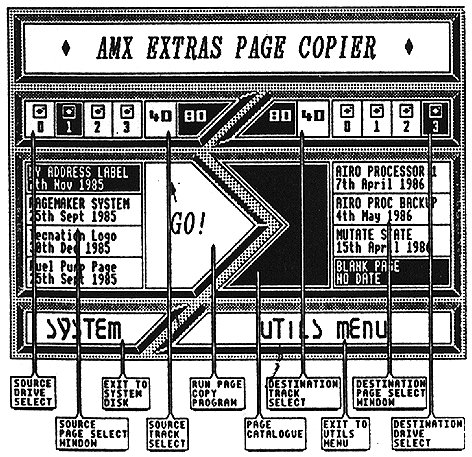
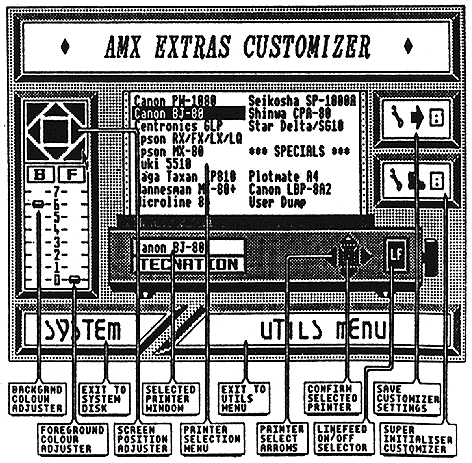
SPECIFICATION
DESCRIPTION AMX Pagemaker Utilities, Fonts & Clip-Art for BBC Micro AMX Pagemaker CONCEPTION 1986 TEAM Neil Lee (Machine code programming) John Simpson & Joe Lavery (Artwork) Alex Blok (UX design and additional software development) LAUNCH DATE 1986 MARKETING AND DISTRIBUTION Advanced Memory Systems Ltd (Subsequently acquired by Logitech) SEE ALSO BBC AMX Pagemaker1985
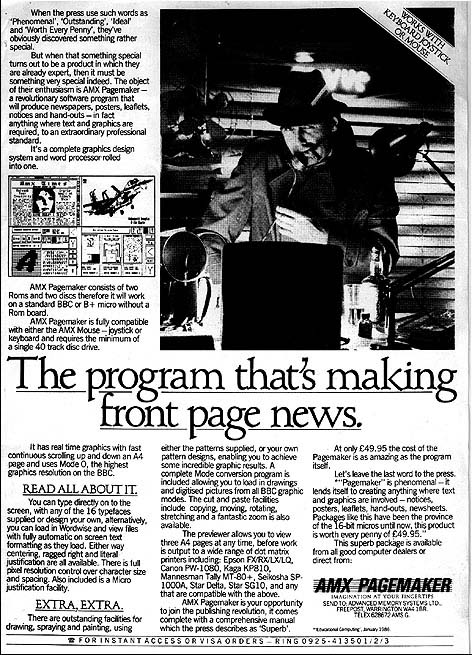
Blending never seen before functionality with an intuitive interface and ground breaking real-time technology, Pagemaker achieved with an 8bit microcomputer something that many thought impossible.

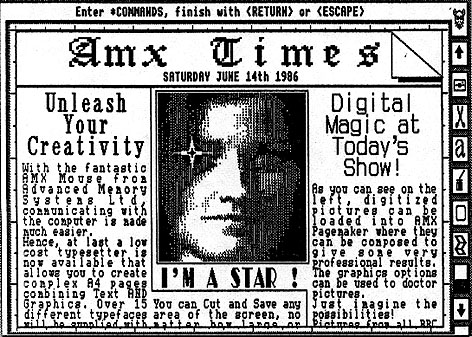

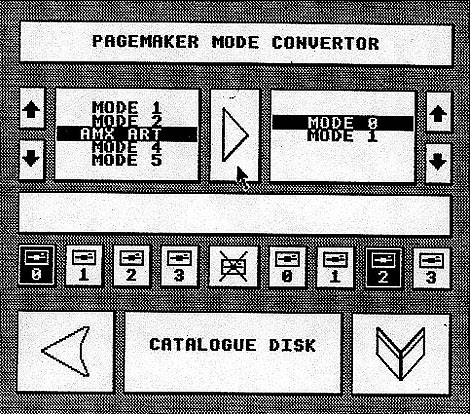
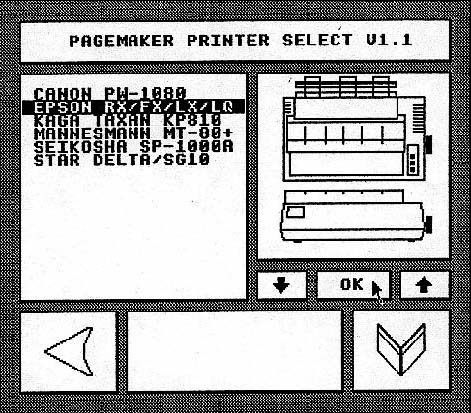

PRAISE
"A straw pole of computer journalists saw the AMX Pagemaker voted the undisputed hit of the November Electron & BBC Micro User Show" The Micro User Magazine, January 1986
"Pagemaker is phenomenal ... this product is worth every penny" Educational Computing Magazine, January 1986
"As a journlist, I was very impressed with Pagemaker, and as an AMX Mouse user I was absolutely enthralled." Pete Lee - Journalist.
"... I like this package. In fact this is one of the most professional packages I have seen for the BBC Micro" "All I can say is go out and buy it..." "This is an excellent package and well worth the money." A&B Computing Magazine, April 1986
"So, the big decision: Fleet Street Editor or Pagemaker? My choice would be Pagemaker ..." Acorn User Magazine, June 1986
"... an exciting package like Pagemaker, can be used with great results by mentally and physically handicapped adults" Learning to Cope Magazine, 1986/87
"Pagemaker is brilliant." R.K.N., Warrnambool, Australia
"Hi! I suppose you've had many such messages, but I would just like to say that Pagemaker is a masterpiece! I use it for business purposes in the office and to produce weekly newsletters for my son's football team and for the school at which my wife teaches. I never fail to sing PM's praises to any one who cares to listen. I look forward to additions to the PM range with great interest and impatience. Cheers, Clive" (The Griffin Family), Wed Oct 22, 1986 via MICRONET e-mail.
SPECIFICATION
DESCRIPTION Electronic Design and Typesetting Software ORIGINAL PLATFORM Acorn BBC Microcomputer with 32K RAM SUBSEQUENT PLATFORM(S) Amstrad CPC 128 Amstrad PCW Commodore 64 CONCEPTION September 1984 LAUNCH DATE October 1985, England CONCEPT & DESIGN Alex Blok SOFTWARE DEVELOPMENT Neil Lee, Alex Blok PROJECT MANAGEMENT Alex Blok MARKETING AND DISTRIBUTION Advanced Memory Systems Ltd, Warrington, England (Subsequently acquired by Logitech.) CODENAME SpinDaisy MAGIC SAUCE Revolutionary real time floppy disk reading and writing software made it possible to edit high resolution pagesSEE ALSO EXTRA! EXTRA! Amstrad PCW Stop Press Commodore 64 Stop Press Amstrad CPC Pagemaker
1985

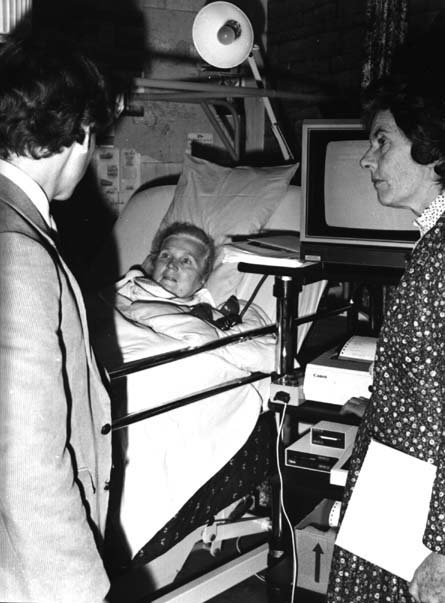
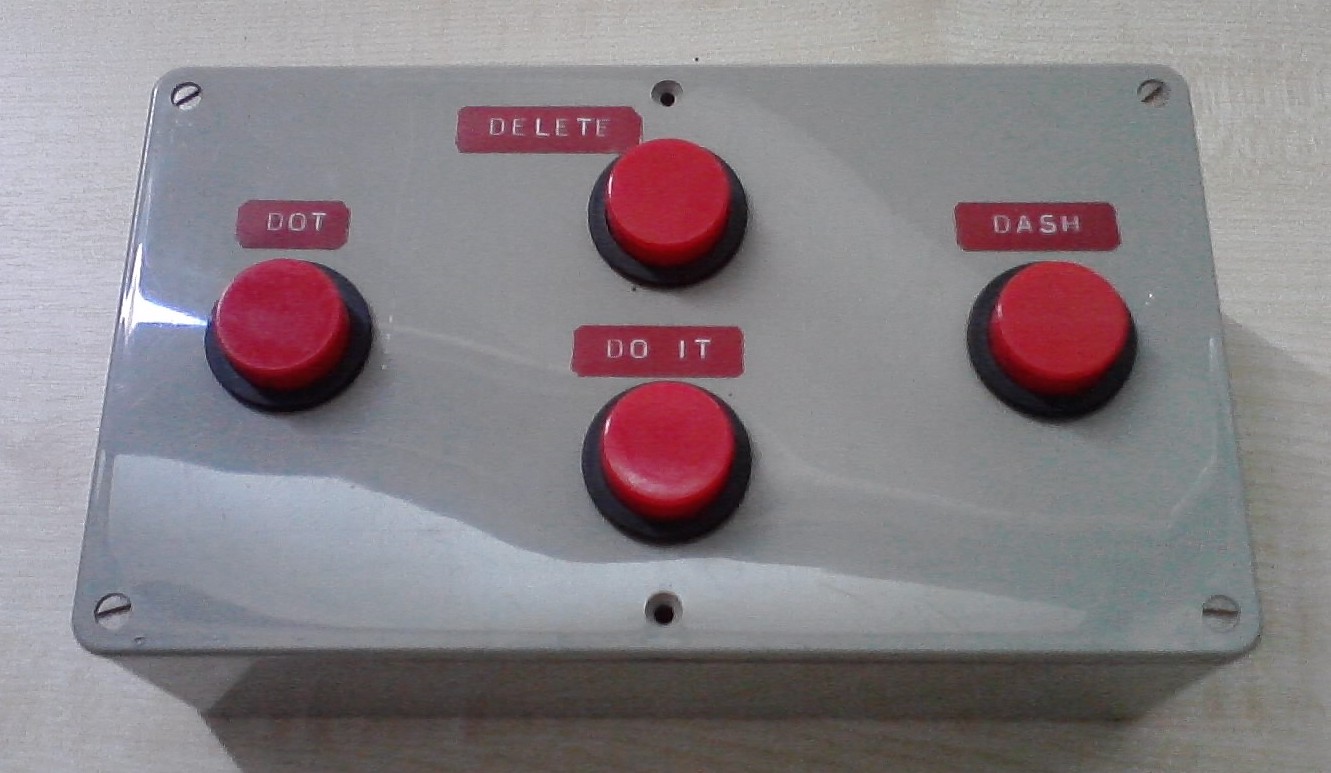
1984


Pi 25 39 An energetic creative visionary, entrepreneur and product guy, Alex enjoys making life easier and more compelling for people through the application of thoughtful design and due process. During his youth and onwards, fascinated with nature and how things work, Alex would digest National Geographic, Electronic Engineering Times, EDN, Scientific American and other journals and encylopedias. He gains inspiration from technical journals on how the latest technologies can make new product categories possible, from flexible displays and artificial muscles to next generation power systems and tamed AI. Alex also enjoys being involved in the creation of marketing materials, originally influenced by the work of David Ogilvy and Apple, Inc - blending a clear value proposition with creative branding and crafty copy writing.
Product + UX + Graphic Design
Copy Writing + Slogans
Talent Spotting Engineers
Business Negotiation
Consumer/SME Business Analysis
Database Scripting (Including prototyping functioning apps in Filemaker)
Social Analysis
Making things including model aircraft, furniture and go carts
As captain of paintball team in Sacramento Valley, California, lead team to two capture the flag victories in 95 degree central valley heat!
Treasurer + Chairman of Newbury Computer Club
School house captain (Alex's house won in sports that year)
Cox of a rowing four
Amazon.com - Superb use of hypertext concepts since the day their book store went live all the way through to today. Kindle + Whispersync are a mix of hassle free technology and a predictable consumer friendly business model.
Apple - Highly effective marketing and copy writing. Attention to detail, such as the sound and visual effects that accompany deleting a file or other action in MacOS and Apple's more recent mobile OSes.
Dyson - Robust design and engineering. Not listed on the stock market, so able to focus on products and staff wellbeing - IE, stakeholders, not shareholders.
Greenpeace - Highly effective and apolitical, therefore the only such charity Alex donates to.
John Lewis - Consumer and staff friendly business thanks to good training and profit sharing, and like Dyson, do not have to cater to shareholders.
Quora - Fascinating, thought provoking & educational.
Tesla/Space-X/Solar City - Prime example of how engineering lead management leads to ground breaking technology that works reliably after robust iterative development, including exploding rockets (RUD).
May reference some products listed above.
2024
-
March - Whilst in bed using a tablet device and bluetooth keyboard, Alex got fedup of trying to position them comfortably. He fired up the Shapr3D CAD app on his Lenovo Tablet X1 Gen 3 and designed a modular stand that could be adjusted to suit the users position and devices. Naming it chassY after the frame like structure of a car, he 3D printed it to try out. chassY worked so well, Alex decided to iterate (improve and optimise) the design and take it to market. His colleagues and random cafe contacts all provided critical feedback. Subsequently, chassY was improved over 10 times before being made available for sale at MakeChassy.com
- In a period of one man week, Alex and his crew conceive of and produce visuals for an off grid single EV charging hub, the BzzzStop.
- July 4 - Alex's releases to friends and family initial concept renderings for POLO MARCO, his design for a space ship to tour the solar system in around 2040. The lack of confidentiality associated with this venture means it can be used by Alex's employer to showcase their creative design skills and pragmatic (‘no Sci Fi’) approach to engineering problems.
- Finally, a dream come true, Alex was able to attend CES in Las Vegas and meetup with key OEMs.
- Designed, took photographs for and developed the world's first walk through ('PhotoWalker') UX for a retail store.
- Produced GONUMBER.COM, a unique directory that made it easy for people to access and share information on businesses. The value proposition exceeded that of indirect competitors, such as Yell, who subsequently suffered massive losses, despite receiving billions in funding from 3i. Alex worked with Alan Whiting to design a clever logo that was featured in advertising (above). Ten years on, GONUMBER was rebranded PiCosm to better reflect its long term ambitions. PiCosm is Alex's slow burn venture to simplify all manner of every day tasks whilst handing user data management and ownership over to you!
- Despite the odds and obstacles, saved the life of and organised the rehabilitation of a close relative, including managing diet and putting together a reliable home control / iOT (Internet Of Things) system to enable a safe, dignified and independent lifestyle. This included customising Android tablets and mobile phones.
- Alex conceived of and produced early designs for the world's first circular mobile communications device (side elevation shown above), drawing considerable demand from friends and colleagues who saw the realistic renderings created by Alex's colleague Alan Whiting. Over 16 years later, the circular display technology is maturing (thanks to smart watches), and after several iterations of the mechanical design, Alex hopes to develop the device (codenamed 'TUiT') in the 2021 timeframe in conjunction with a manufacturing partner. Motorola have expressed written interest in TUiT. Space this watch!
- Contracted by Sun Microsystems to produce artist's impressions of how Java may be used out in a real world future.
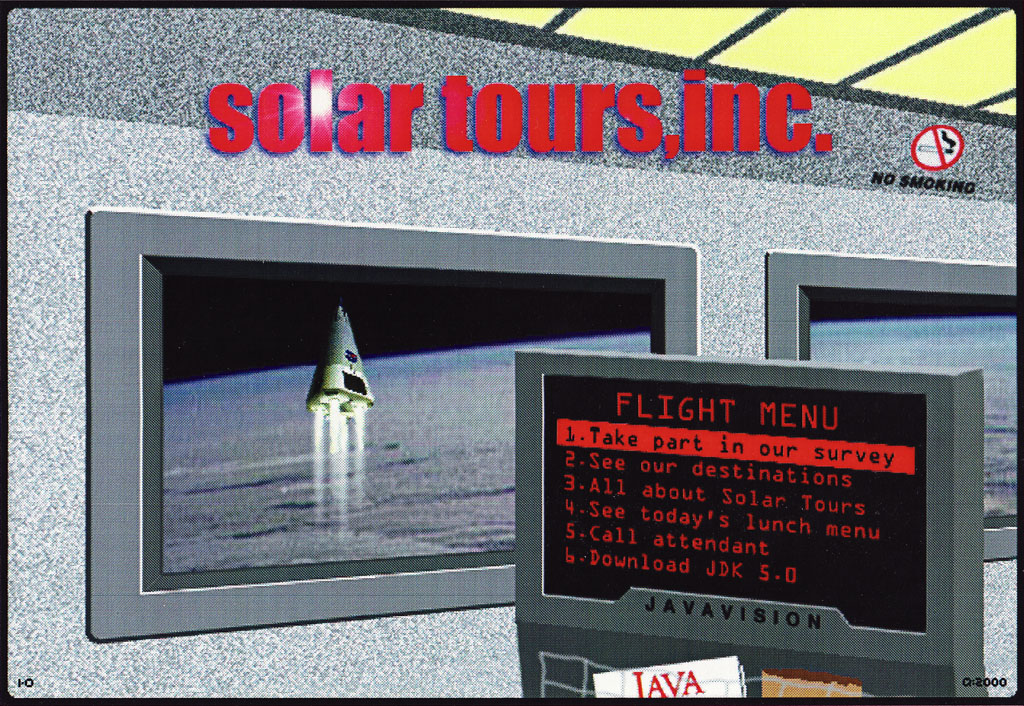
- Produced FONE427, a system for delivering voicemail messages to users of the ICQ instant messaging service. Designed the web UX (above). Project abandoned after potential partner closed down.
- Artwalker wins Sony and Yahoo site of the year awards.
- Logitech gave Alex one of the world's first digital cameras to use for an experimental project to create a 'photowalk' through Palo Alto, California via a series of hyperlinked street scenes. (Way before Google's Street View.) This inspired the creation of The Artwalker Project - Art To Explore(tm), where fine art fans navigate through scenic locations via a series of interconnected paintings or drawings that they can admire and purchase. Back then, Artwalker was hand built, with no CMS (Content Management System), so today, Alex is managing the development of a custom smart CMS to speed up the generation of 'artwalks' and will relaunch Artwalker in due course or sell it to an online gallery.
- Alex and his colleague Brian Christman (who went on to design the UX for TiVO) used Alex's design concepts to win the contract to create the logo and visual identity for Macworld Online. Alex designed the above ONLINE logo that you may have seen on t-shirts and baseball caps.
- Conceived PiN, The People's Interactive Network. Supported by Apple. More details to follow. A fascinating project that was killed off by the introduction of a minor global venture known as the world-wide web.
- Alex was contracted by Books That Work to design the UX for a ground breaking series of CD-ROM based multimedia DIY guides.

- Initially for a 5 week break, Alex flew to the USA to see some family friends and explore Silicon Valley. Loved it all so much, remained there for just under 10 years. Note, this was not a business trip, but a vision quest. Leaving the fish bowl.
- Introduced to the world, the UDiS Media proposal. (More on this to follow.)
- Classic BiT BOPPER featured live on BBC's Tomorrow's World, drawing an audience of 17 million viewers. (Verified.)
- Bought and refurbished his house in Newbuy, England. Chose the kitchen paint and tile colours using Deluxe Pant software on the Commodore Amiga. Designed the layout for and specified all the components for the bathroom and kitchen, working alongside the builders to transform what was a lacklustre home into something more appealing.
- Originally conceived for the Commodore Amiga, designed and began development of intuitive Jenesis real time 4D 'Imagination Processor' on the Acorn Archimedes. Acorn kindly supplied Alex with the hardware following the success of AMX Pagemaker on the Acorn BBC Micro. Jenesis was designed to make the creation of 3D objects and worlds using the same usability concepts as tangible workshop tools, such as a lathe and milling machine. Alas, the project proved too difficult to engineer and was abandoned. The real time graphics routines were used instead in Alex's only white elephant, the Classic BiT BOPPER. Jenesis was re-started and supported by NeXT, but that platform was abandoned so Jenesis died again. Much sadness. Alex may re-awaken Jenesis now that virtual and augmented reality is a thing, although there exists much competition today from Microsoft Hololens, Google Daydream and Autodesk 360.
- Surprised that the Amiga was not being given an opportunity to show its full potential, Alex approached Commodore with an offer to develop software for dealers to demonstrate the machine’s remarkable audio visual and multitasking capabilities. Commodore accepted and Alex expanded his software development team to produce AmigaMagic, a remarkable mashup of ahead of their time UX concepts and true multi-tasking technology.
- Designed and project managed development of PCW Stop Press, the world’s first ‘designer’ desktop publishing application featuring a unique single control panel UX that allowed specific features to be activated with an icon grid reference, such as H5 for the line tool. Won multiple awards and lead to the collapse of all competitors. Alex considers PCW Stop Press as the best product he has ever designed.
- Using a mix of BBC Basic and 6502 Arm machine code on his Acorn BBC Micro, Alex wrote prototype software for audio reactive visualiser. (Footage is on 8mm video cassette in a wooden box.)
- Developed D.O.R.I.S. Morse Code Word Processor for polio victim. Organised donations of equipment from various suppliers. Praised by both the recipient and the charity that organised the venture. Featured in the press during the public unveiling of the system by Countess Mountbatten of Burma.
- Invented, designed and produced Europe's if not the world's first Desktop Publishing application, AMX Pagemaker. Engineered by Alex's good friend, Neil Lee, AMX Pagemaker went on to win multiple awards and ignited the consumer and SME electronic publishing revolution. Alex sketched out the designs for AMX Pagemaker within a few hours on a notepad. It took a year to develop. The screen print above is of the font designer - the only component of the app that Alex also had a hand in coding - a horrible experience and what made him abandon software development and focus on UX design!
- Alex's first commercial product Artsystematic was published - A basic CAD application for the BBC Microcomputer featuring a unique 'perspective aid' to help with drawing 3D shapes. Used by British Airways to create some presentation content.
- Reluctantly quit Quantel/Micro Consultants, Newbury, England, where over 5 years Alex progressed from trainee technician through to an electronics test engineer. Whilst testing PCBs for it, he became fascinated by the world famous Quantel Paintbox, triggering an interest in computer graphics and UX design.
- At 3am during a major thunderstorm, Alex's parent's home was hit by lightning that destroyed all of his gadgets, including the Sinclair Spectrum. With the insurance payout, Alex purchased a BBC Microcomputer, allowing much more sophisticated software to be developed.
- Whilst on holiday in France, Alex wrote a submarine hunter video game on IBM PC to help teach a friend to code. Friend went on to achieve major success in IT.
- Alex wins International competition to design a computer of the future. The prize of a Sinclair ZX Spectrum was awarded by Sir Clive Sinclair himself, who went on to hire Alex to put together some conceptual industrial and functional design ideas for what became the One Per Desk.
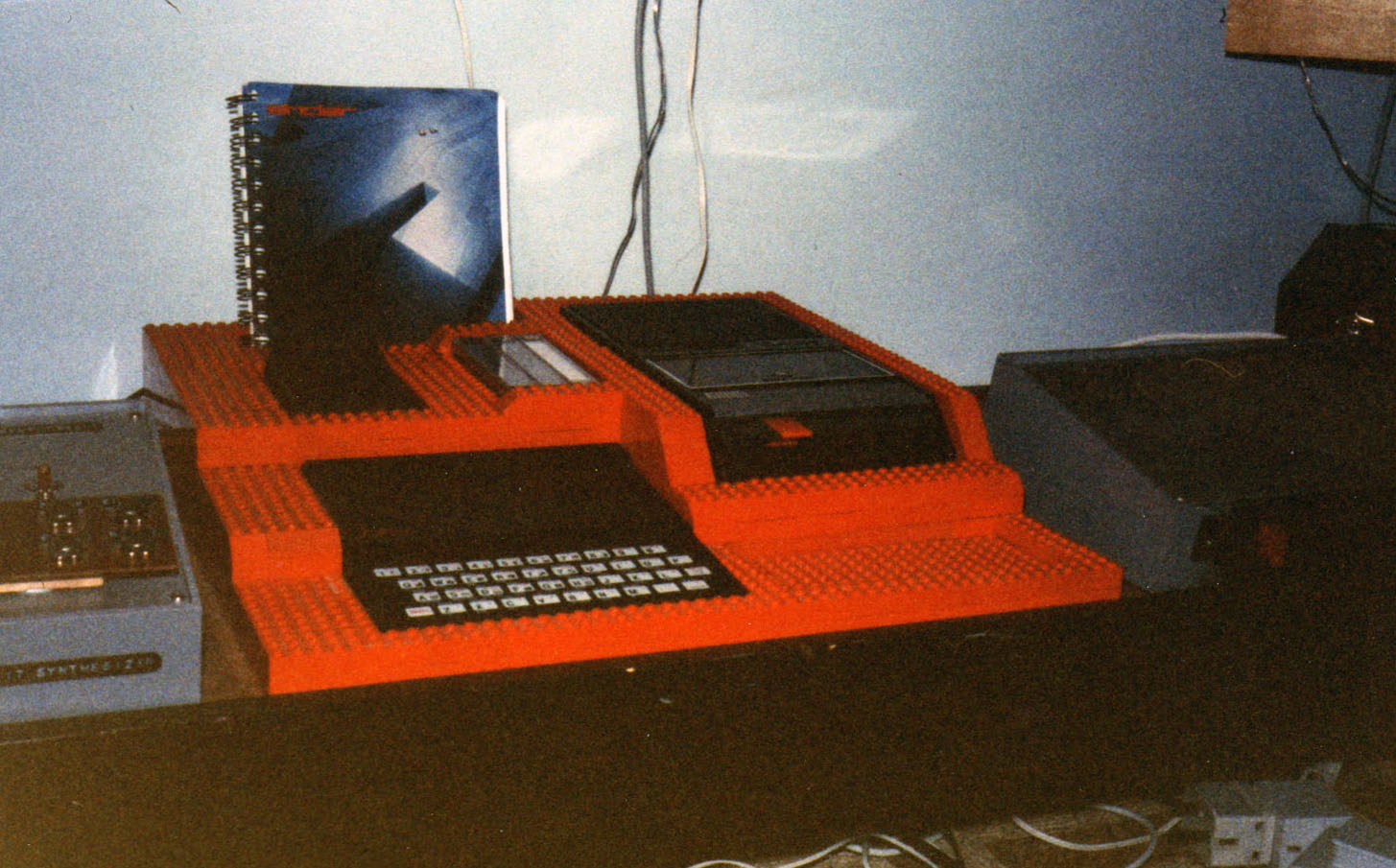
Lego dock Alex designed and built for his ZX-81
1981- As a college project, Alex wrote a tank battle game on the Sinclair ZX-81 (above in his Lego organiser) and received 100% for the work.
- Won school photographic competition two years in a row.
- During his childhood, Alex spent most of the time outdoors building things, such as go karts (with winter ski attachment!), model planes and even a three story tree house in the depths of the great Penwood where many adventure was had with brother and friends.

2020
- Worthing Herald (October 22)
- EE Web (September 11)
- Tandoori Magazine, July
- Masala Magazine, September
- Gadgetoid
- Mondo Magazine, we were credited with inventing the digital (video) lighting revolution with BiT BOPPER™.
- Hotelier (October)
- FMCG (Aug/Sept)
- HRM Hotel & Restaurant Manager (Aug/Sept)
- Felix, Imperial College Newsletter (October)
- EuropeMedia.net (March 25)
- "The Lab", LBC Radio, London (January)
- InfoSync.no (January 16)
- TheRegister.co.uk (January 6)
- Interactive Week (January 11)
- Show Technology Magazine (Spring Issue)
- Audio Visual Magazine (November)
- AV User (November)
- Lighting + Sound International (October)
- Disco & Club Trade International (October)
- New Computer Express (August 12)
- A&B Computing (August)
- The Micro User (June)
- 8000 Plus Magazine (June)
- Disco & Club Trade International (May)
- BBC Acorn User Magazine (May)
- Amstrad PCW Magazine (April)
- ACE Magazine (April)
- Popular Computing Weekly (April 6)
- Amiga Computing (February)
- 8000 Plus Magazine (February)
- Your Amstrad PCW Magazine (February)
- Amstrad PCW Magazine (January)
- Computer & Video Games Magazine
- The Daily Telegraph
- Computer Shopper (December)
- Amstrad Action (November)
- 8000 Plus Magazine (July)
- Your Amiga (June/July)
- Your Amstrad PCW (April)
- Personal Computer World (March)
- Computing with the Amstrad PCW (February)
- 8000 Plus Magazine (February)
- A&B Computing (January)
- 8000 Plus Magazine (December)
- The Wordsmith (September/October)
- Putting your Amstrad to Work (September)
- Personal Computer World (August)
- Amstrad 8000 Plus (July)
- A&B Computing (June)
- Acorn User (June)
- Commodore Computing International (July)
- The Micro User (March)
- Computing With The Amstrad (February)
- Amstrad Action (February)
- Educational Computing (February)
- Designing (Autumn Issue)
- Amstrad Action (Christmas Issue)
- Desktop Publishing Today (December)
- Personal Computer World (August)
- Computer Review (August)
- Amstrad Action (July)
- Popular Computing Weekly (June)
- Practical Computing (May)
- A&B Computing (April)
- Your Computer (April)
- What Micro? (March)
- Oxford Mail (January 28)
- The Micro User (January)
- Learning to Cope Magazine
- Personal Computer News (August 12)
- Micro User Magazine (May)
- Newbury Weekly News (May)


